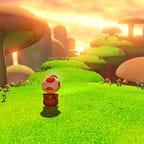Snow in Alabama, and the Danger of Nature
For all the advancements in the 21st century and beyond, humanity is still painfully vulnerable to natural forces
It’s snowing in Alabama today. That means many things, from pointed jokes at the expense of “Southern incompetence” to schools cancelled across the state, to possible complications in the days ahead. The snow in Alabama is just part of the bigger, national picture, as wintery conditions sweep across the entire country.
Snow in Alabama always reminds me of how vulnerable humans still are to natural forces and disasters. In an age of smart homes and increasingly-powerful technology for nearly every possible purpose, it sometimes seems jarring to remember that something as simple as a storm can derail large swathes of the United States. For people who live in poor areas of the country (or the world), the effects are even more pronounced.
Hurricanes, forest fires, mudslides, and now perhaps winter storms remind us that even America can fall victim to the weather. This reality often plays out in a number of entertainment options, framing stories about human endurance to survive starkly-terrible conditions. But the dangers of the weather often fly well under the radar of public awareness. Nuclear winter is perhaps the greatest natural disaster that could potentially happen, and global climate change continues unabated day after day. Nature, in other words, is still deadly.
A week or so ago, I started listening to the Outside Podcast. It’s a fascinating semi-regular feed of interviews and first-person accounts revolving around anything related to its host magazine’s subjects. The first episode I listened to centered around the story of a man trying to survive a broken leg at the bottom of a waterfall. The story was well-told, well-produced, and interesting. I think humans find stories like these inherently worthwhile, and without getting too far into pop psychology I’d venture a guess that this interest comes from the danger of the elements, the romantic stories of “humanity against nature.” Out in the wilderness — cut off from cell signals, internet availability, and often things as basic as food and warmth — humans realize just how vulnerable they can be to the wilderness. Just staying alive becomes an impressive feat.
A few days ago, in the same vein, I started playing a wilderness-survival game titled The Long Dark. Developed by Hinterland Studios, this game places players in the wilderness with the sole mission of surviving as long as possible. The first time I played the game, I froze to death quickly because I hadn’t gathered enough food and supplies. The idea of playin a game centered around managing warmth and food may sound boring to some, but the game hits its notes incredibly well, as Kotaku’s Riley MacLeod noted some time ago. The world of The Long Dark is cold, snowy, dangerous, and haunting at times. Players can survive for in-game days or weeks, but death at some point is a constant. A fire, food, and water are all essential.
The wilderness and nature are more than the backdrops to podcasts and video games, though. The hurricanes of 2017 are a reminder that the disasters that make such great stories can also destroy the lives of millions in just a few days. The state of California has also had a terrible year, following destructive fires with more recent mudslides. A quick Google search for “natural disasters” brings up scores of news stories.
Perhaps even more alarmingly, there’s plenty of future potential for more danger. Daniel Ellsberg, a former nuclear strategist and planner, spoke at length on the prospect of Nuclear Winter in his book, The Doomsday Machine. Ellsberg uses the conclusions drawn from numerous scientific studies and surveys to argue that the true disaster from nuclear war would go far beyond the initial death toll. The environmental after-effects would wreak havoc on the atmosphere, Ellsberg argued in an interview with NPR, “killing harvests worldwide and starving to death nearly everyone on earth.” I don’t mean to suggest that nuclear war is on the horizon, but recent saber-rattling between the United States and North Korea makes this danger at least worth mentioning.
Global climate change also looms over nearly everything in the 21st century. Recent monsoons in countries like Bangladesh have displaced many people, and the potential for disasters like these are only rising. The science and global implications of climate change deserve more space than I can devote here, but the science and future predictions are convincing.
It may seem simplistic to say that humans are vulnerable to natural disasters and catastrophes. Anyone who has followed the news in even a cursory manner over the past 12 months is aware of this, to say nothing of people who live in places like Houston or Puerto Rico. However, it’s easy to forget just how damaging some storms can be for people who live in relatively “safe” places of the country. And any citizen of the mainland United States has many more resources for disaster relief than people in poorer regions of the world. For myself, in Alabama, hurricanes and forest fires seem like faraway events that have little bearing on my life. Even the snow that is supposed to fall this afternoon won’t have much of an impact on me other than keeping me home for a day or two.
The point of this brief essay is to remind (and perhaps remind myself, more than anyone) of how vulnerable we still can be to nature. New York City, with all its advanced infrastructure and planning, is facing serious complications in the future due to flooding spurred by climate change. Humans are clearly much better prepared to face hurricanes and winter storms than they were 200 years ago, but even advanced models and relief techniques can be inadequate before the worst nature has to offer. Nature provides a great backdrop for stories and games, but it is deadly, and forgetting this danger would be an unforgivable error.
